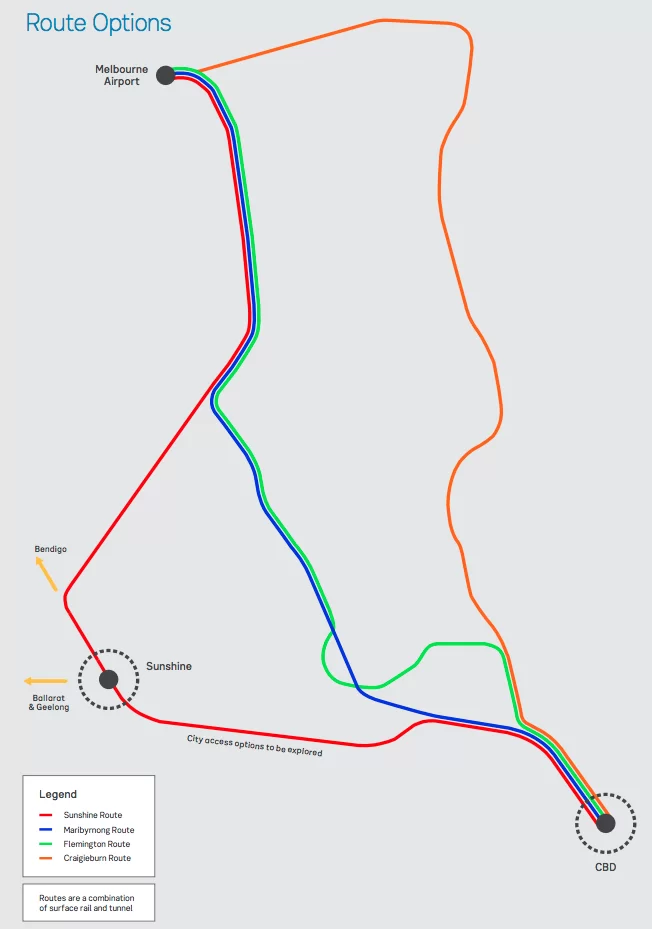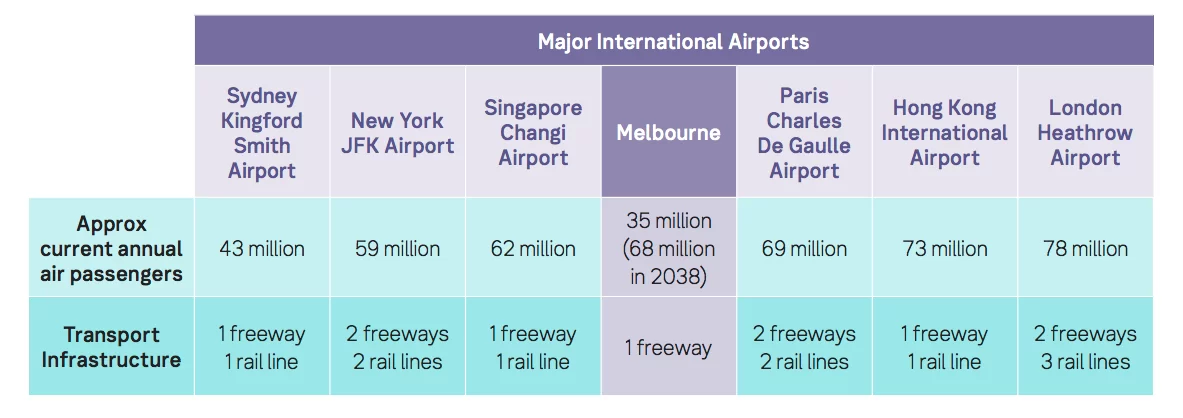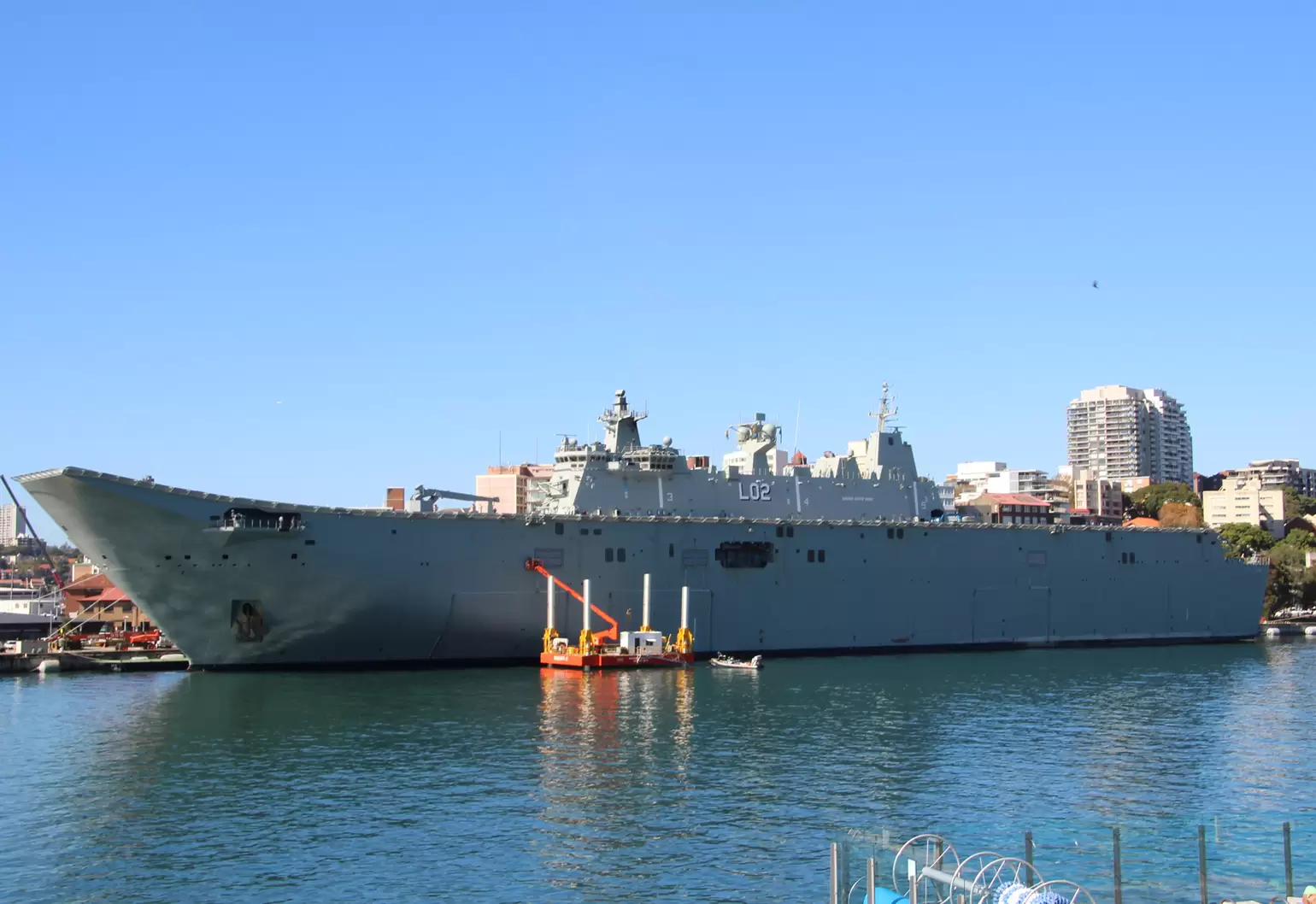The Melbourne Airport Rail Link has been on the drawing board for decades. But with new funding promises of $10 billion, will track finally be laid for this much-anticipated project?
Plans for Melbourne to get its long-awaited Melbourne Airport Rail Link solidified this past week after Victorian Premier Daniel Andrews pledged $5 billion for the project if re-elected. The campaign promise came shortly after the Federal Government said it would commit $5 billion if the State Government matched it.
“People have waited since the late ‘60s … it’s time to stop talking about these things and start building them,” Andrews said earlier this year.
Which route?
The project appears to have bipartisan political support, as well as buy-in from Melbourne Airport, eliminating previous divisions about whether it should go ahead or not. However, a final decision needs to be made on the best route for the rail link.

Of the four proposals on the table, the Sunshine alignment is the frontrunner. This route would link trains from the airport to the CBD via a ‘Sunshine Super Hub’ to the city’s west. Other options include the Maribyrnong Route, the Flemington Route and the Craigieburn Route.
“We were never going to agree to just an airport rail link – it can be an airport rail link and it can unlock capacity for rapid, fast services to Geelong and Ballarat,” Andrews said.
Although this option has a higher travel time, according to the Melbourne Airport Rail Link – Sunshine Route Strategic Appraisal report, benefits such as connections to regional Victoria and lower cost and construction times put it ahead of the other three.
A direct route option shouldn’t be dismissed, though, said Graham Currie, a professor of transport engineering and director of the Public Transport Research Group at Monash University.
Using existing rail corridors keeps costs down, but Currie said it’s important to separate out the rail link from metropolitan trains by having it set on separate tracks.
“That’s a problem with the existing concept – it integrates it with existing rail operations, which are already at capacity,” Currie said.
He added it would be “very visionary” and “a good strategic move” for Melbourne to link the final route with regional Victoria – and possibly even to Adelaide and Sydney.
“Policymakers should get on with the existing link as they’re envisaging it, but when building it, keep in mind the idea of a wider regional link between the networks – something that hasn’t really been thought of yet in terms of Sydney, Adelaide and Brisbane,” Currie said.
Economic factors
According to Currie, another reason there’s renewed support for the project is because there’s now a strong economic case for improving access to the region through the airport.
“We have meteoric forecasts of growth, and a reason to really support the airport as a major part of economic development for the future of the state,” he said.
“Airports are a major part of freight and international passenger movement … and we need to be part of that.”
According to the Strategic Appraisal report, the airport expects its passenger numbers to nearly double from 35 million to 68 million by 2038.
Rail access to the airport will also be crucial in helping Melbourne keep its title of one of the world’s most liveable cities, as well as keeping pace with other international hubs such as London, Singapore, New York City and Hong Kong– all of which have direct rail lines to their airports.

“The rationale for the rail link is that [Melbourne Airport] can’t grow without it. Our airport is not too far out, but it’s far enough away that it’s a barrier, and we need to reduce that,” Currie said.
Door to door
Regardless of the final design, in order for rail to be an attractive transport option it needs direct access to the terminal, which would require reconfiguring some aspects of the airport itself.
“The airport rail link will need to be front row in terms of access to the terminal itself, just like in Sydney,” Currie said.
Other factors to consider in the final design are the number of pedestrian road crossings, surrounding freeway overpasses and underpasses (which might affect train carriage designs), and traffic control in and out of the airport.
Adding rail access to the Melbourne Airport would have roll-on effects for other transport options around the city. One of the biggest players in this space is Skybus, which has carved a niche for itself as a cheap and reliable public transit option between the airport and the CBD, as well as taxis.
“They are also facing congestion problems to the airport, and because everything is growing so much, [a rail link] is going to be successful for all the existing modes,” he said.
When asked about whether this is the time the project actually happens, Currie said it depends on both State and Federal Government keeping their funding promises.
Work is underway to produce a full business case for the Melbourne Airport Rail Link – outlining estimated travel times, costs and the full project price tag – by sometime next year. If approved, the State Government plans to begin construction in 2022.



